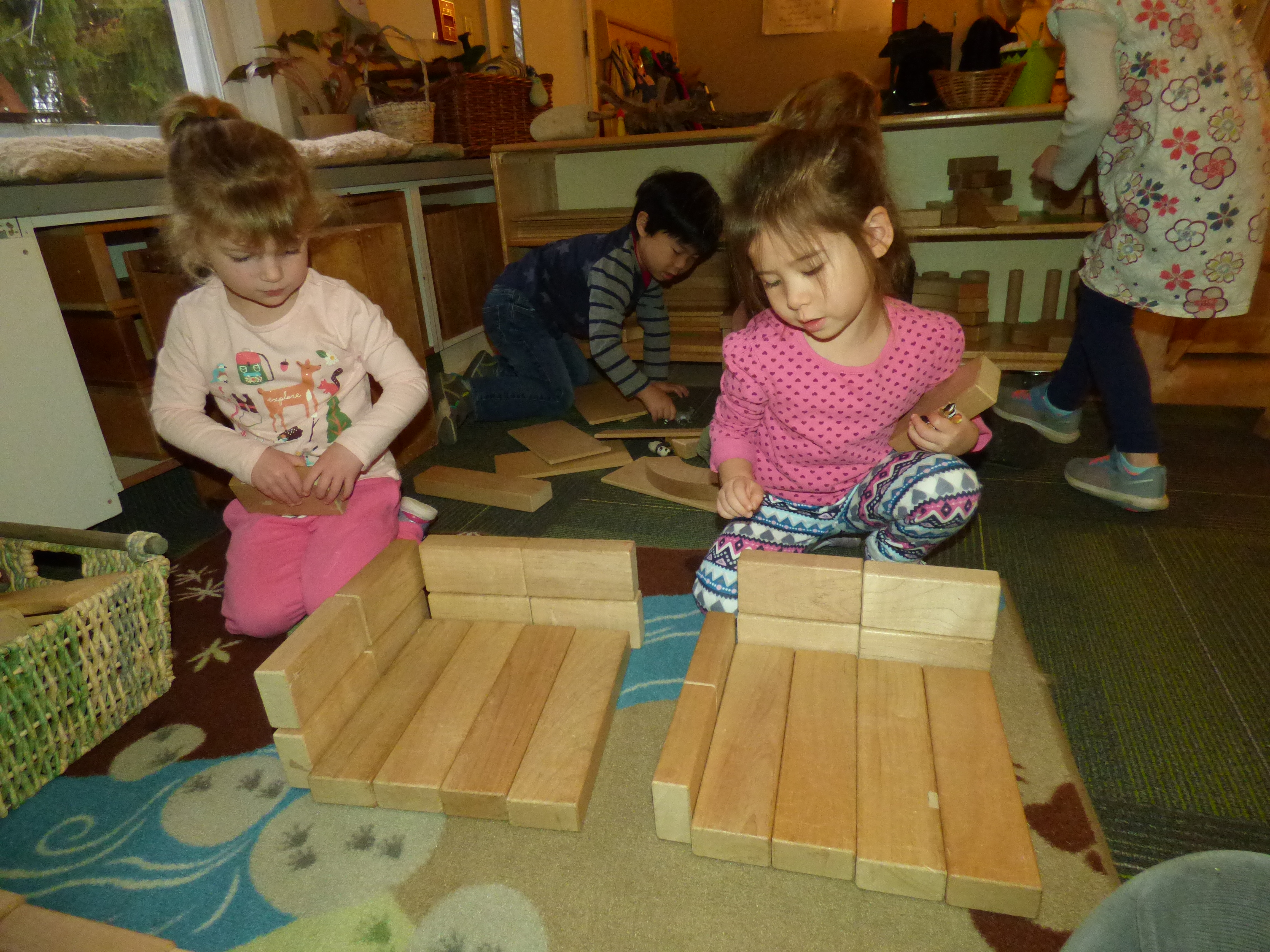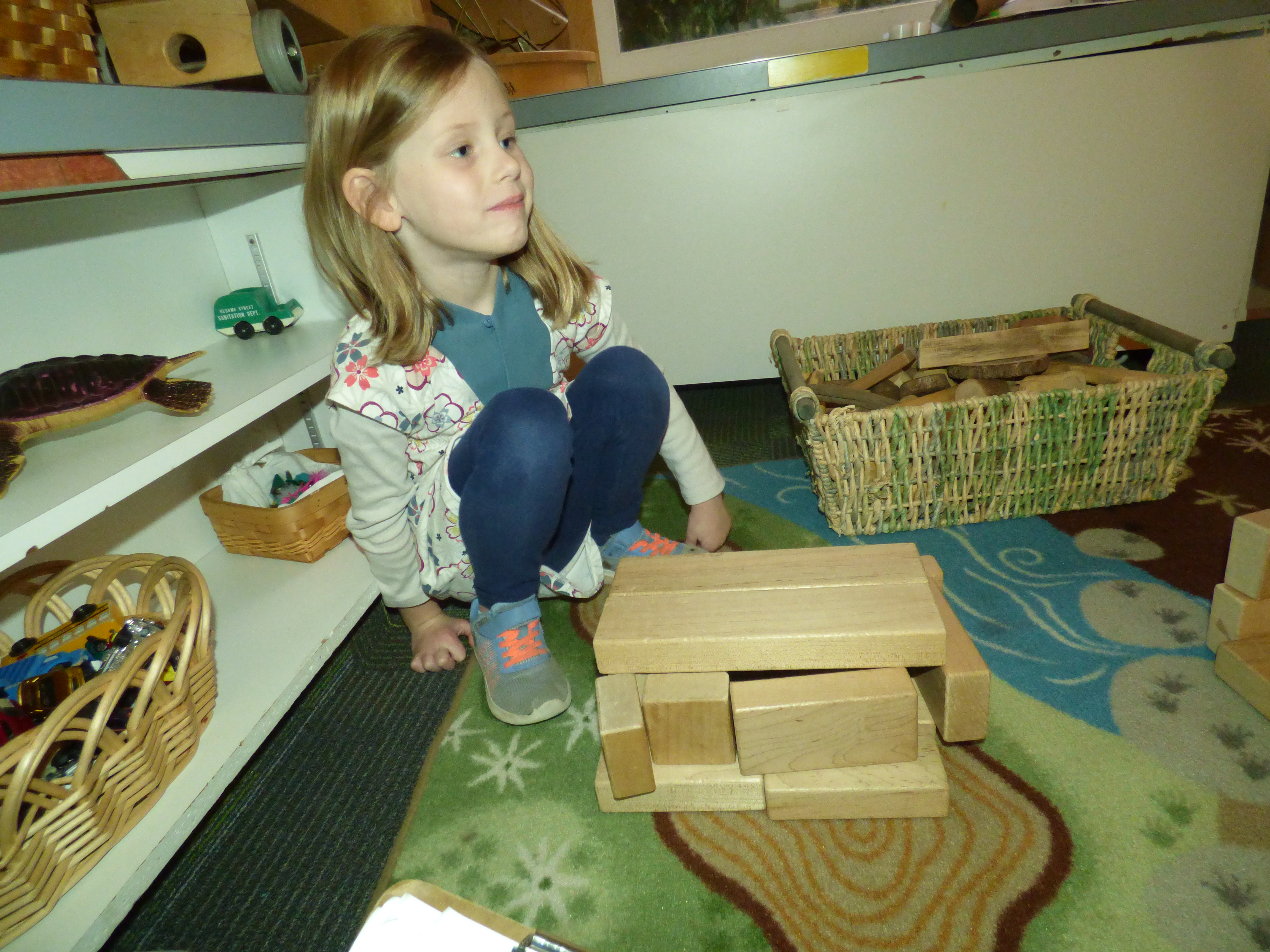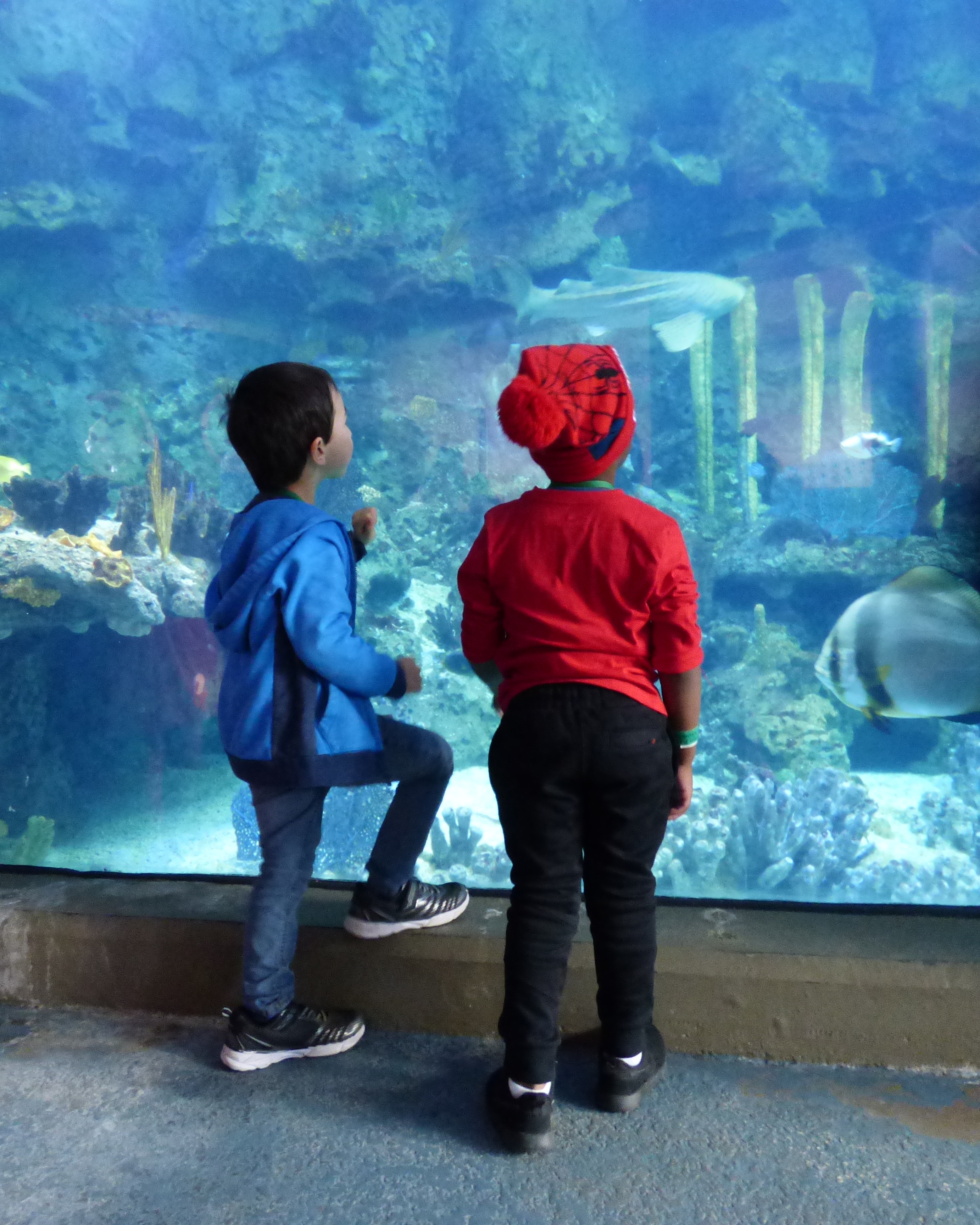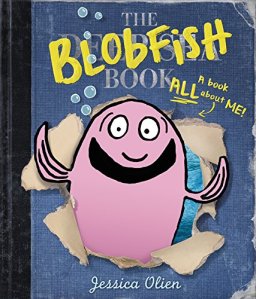The children were trying to figure out how they might convert our loft into a more comfortable spot for hibernating or adapting through the winter. A few ideas sprang forward including making a burrow under the bottom, creating cave walls on the lower portion, and making beds in all areas. While a few debated the possibilities, another group began scouting out the top of the loft. They explained that they needed to find materials to make a nest that they wouldn’t fall out of. Their plan was to create a nest and suspend it from the balcony banister. Thankfully, they realized the trouble with flimsy grass-like materials in creating suspension beds before any human trials were put forward.
Feeling that I might be able to provide them with some more safe examples of nest building, we pulled up good ‘ole Google images and perused nests of all sorts. Now our interest became more fully grounded in materials. Our quest to create the perfect nest began.

This project is not yet done, but if you’re interested in making your own, here are the materials we used so far:
- straws
- brown paper (grass)
- yellow paper (sticks)
- many colors and lengths of raffia string
- white and red Basket Box & Bag shred
- twine
We moved it into the box as none of the children have yet come up with a plan for “sewing” (their words) or sticking the nest together, yet. Although one enterprising student did suggest that I could tie all of the pieces together…. I think we’ll see if they come up with another suggestion.







 Our trip to the aquarium today went quite well. The sea life we most wanted to see was up and about, wiggling and swimming for all to view. The almost unanimous favorite? Drum roll, please…….
Our trip to the aquarium today went quite well. The sea life we most wanted to see was up and about, wiggling and swimming for all to view. The almost unanimous favorite? Drum roll, please…….
